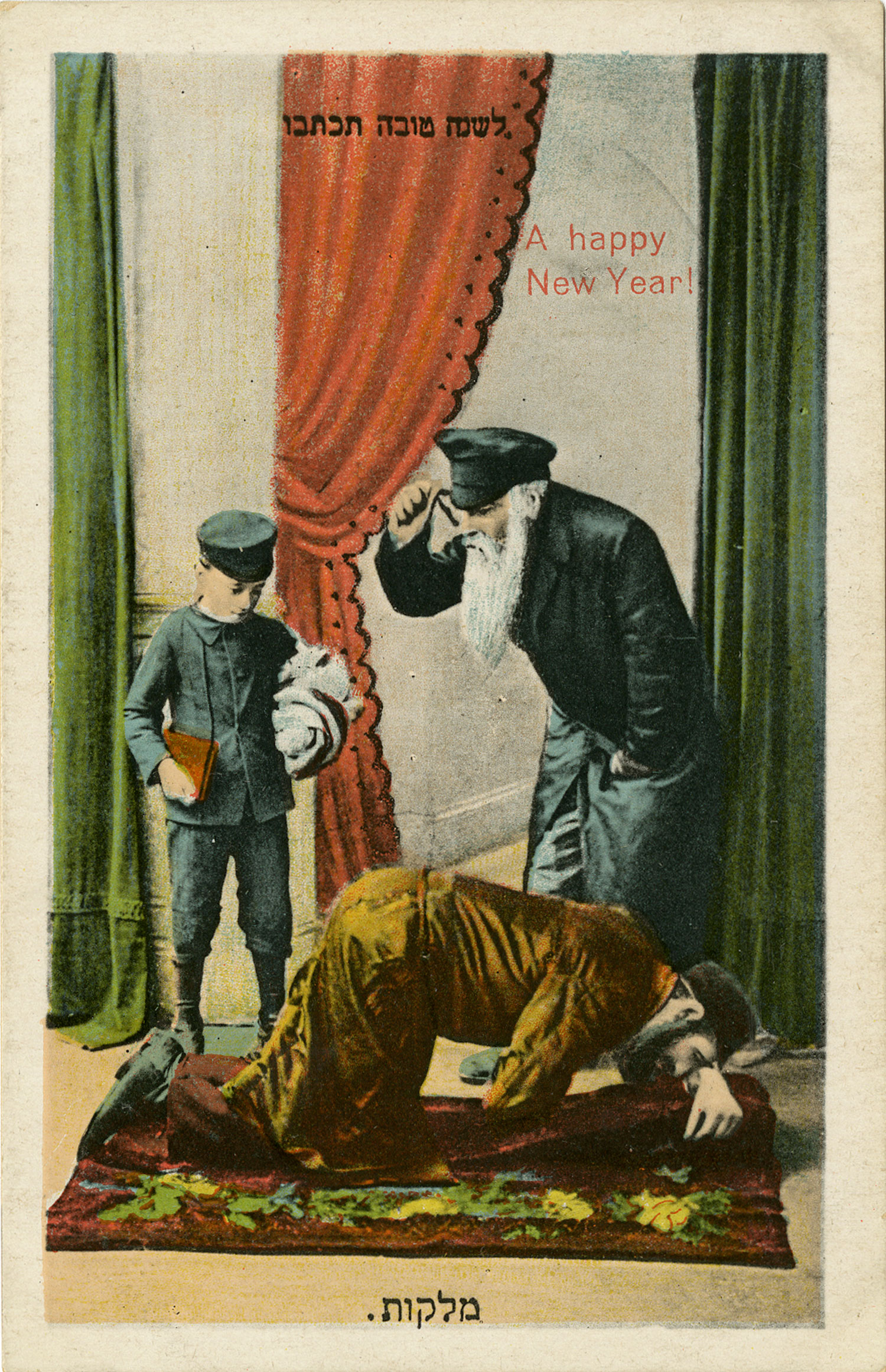The Yom Kippur ritual of malkot, a symbolic chastisement enacted before the holiday begins, traditionally takes place inside the synagogue, near the door. One congregant crouches on hands and knees while another gently taps him on the shoulders three times with his belt, while reciting Psalms 78:38: “He the merciful one is forgiving of iniquity and does not destroy, frequently he withdraws His anger, not arousing His entire wrath.” Another tradition requires 39 taps, three times the number of words (13) in the scriptural passage.
There are various interpretations of this custom. One is that in the time of the Temple, the Sanhedrin (the supreme Jewish court) could punish sins with up to 39 lashes. Thus, some devout Jews believe they are deserving of very harsh punishment, but that God will forgive them if they repent on Yom Kippur. The symbolic lashes set the mood for true and full repentance. Malkot appears to have been a common practice in the early modern period, but fell out of favor in Western Europe and America. Because of the appeal of the symbolism, it has been widely revived in recent decades, especially in Hasidic communities.
This image, intended for a Jewish audience, represents a smaller, more intimate ritual between two people, rather than a communal ceremony involving the entire congregation. In contrast to holiday scenes featuring crowds of synagogue attendees, formal processions, and sermons, this portrayal of malkot offers an entirely different type of ritual and another perspective on Jewish ceremony. The postcard is not intended to impress and dazzle readers as were many holiday images published in popular periodicals during the late 19th and early 20th centuries. While depictions of ceremonies in non-Jewish periodicals were often accompanied by detailed descriptions, the picture here of a very specific ritual on a postcard containing no context suggests it was familiar to Jewish audiences, who would have been able to appreciate the conveyed meaning via the ritual without any explanatory text.
